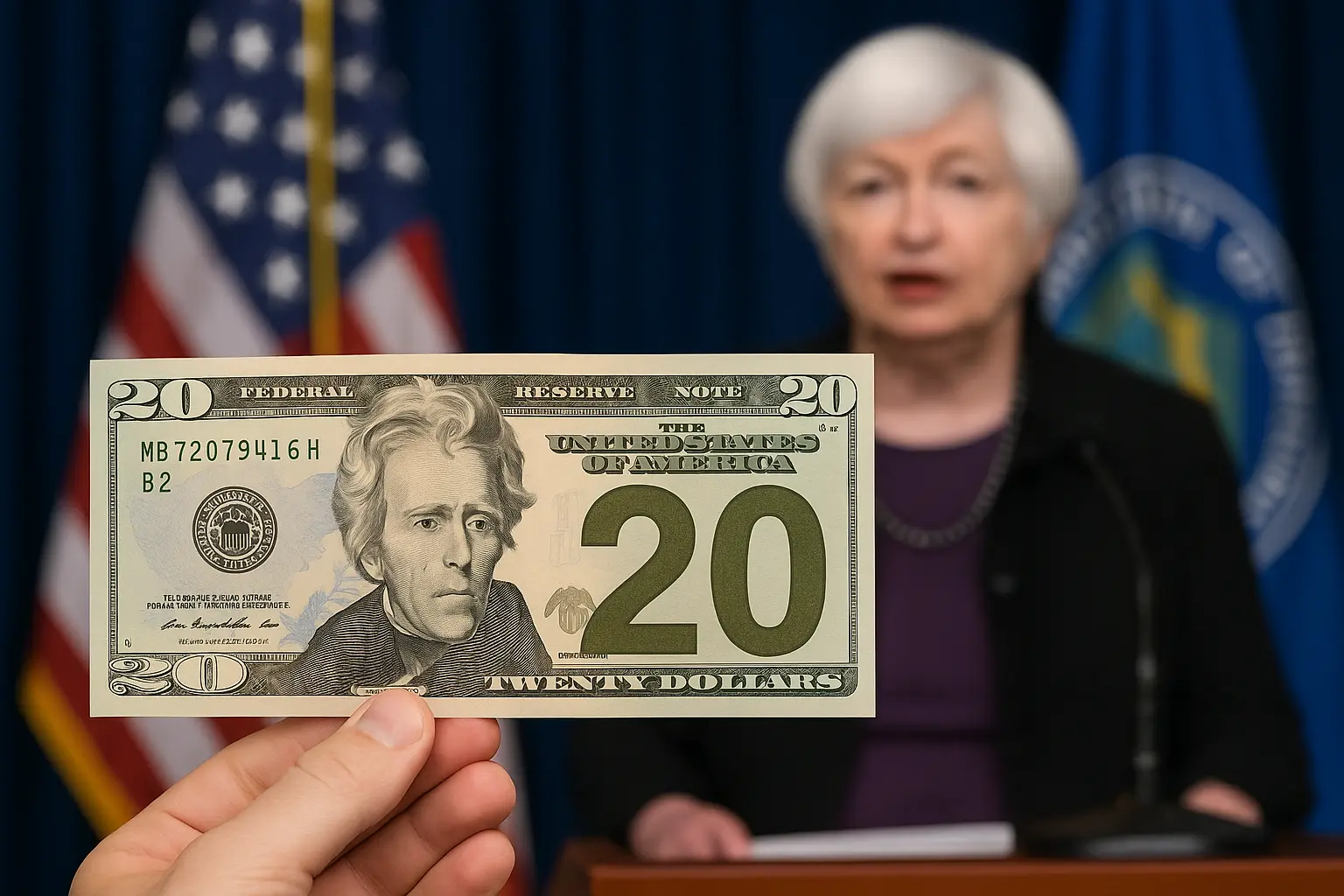White House Unveils Plan To Solve Inflation By Printing Larger Font On Dollar Bills
WASHINGTON, D.C. — In a bold attempt to curb inflation without raising interest rates or pursuing complex fiscal reforms, the White House this week announced a sweeping initiative to make U.S. currency “look more valuable” by enlarging the font size of the numbers printed on every bill.
“This is about restoring confidence in the dollar,” said Treasury Secretary Janet Yellen at a press conference unveiling a prototype $20 note with the number “20” stretched to cover nearly the entire bill. “When Americans see a bigger number, studies show they instinctively assume they have more money. That’s just basic economics.”
According to administration officials, the redesign will be rolled out in phases beginning in early 2025. By midyear, the $1 bill will feature a bold “1” large enough to obscure George Washington’s cheek, while a “100” on the $100 bill will reportedly be visible from across a crowded room.
“The average consumer glances at their wallet multiple times a day,” said Project Lead and U.S. Mint spokesperson Martin Greeley. “If that person opens it up and suddenly sees a larger, bolder dollar amount, they’re going to feel wealthier, and wealthier people spend more. It’s classic trickle-up prosperity.”
The initiative, dubbed Operation Fontonomics, is already receiving bipartisan attention. Conservative lawmakers praised the plan as “a market-driven solution requiring only ink and confidence,” while progressives lauded it as a “low-cost way to improve the psychological well-being of working-class families.”
Still, skeptics remain. Economists at the Brookings Institution warned that simply enlarging the size of monetary numerals could create unforeseen consequences, such as dramatic increases in wallet girth and confusion in vending machine scanning technology. A pilot study conducted in Des Moines reportedly revealed multiple residents mistaking their $10 bills for $100s after the redesign — an error some described as “the happiest confusion of their lives.”
Some businesses are already preparing for the change. Subway sandwich shops, for instance, announced plans to reduce the font size on all menu prices by 30 percent in order to “maintain proper balance in the consumer psyche.” Meanwhile, Las Vegas casinos expressed concern that large-font chips might embolden gamblers to play with money they don’t actually have.
On the streets of Cleveland, local resident Charlene Porter gave the idea her tentative approval. “If I open my purse and see a gigantic fifteen-inch ‘50,’ I’ll probably strut into Target like a millionaire,” Porter said. “I mean, it’s not more money, but it feels like it.”
To complement the larger numerals, the Treasury hinted at additional design tweaks, including holographic sparkles intended to “radiate prosperity” and a subtle peppermint scratch-and-sniff feature meant to evoke freshness and spending confidence.
When asked if the White House feared the new approach might lead to further devaluation of the dollar abroad, Press Secretary Karine Jean-Pierre shrugged. “Frankly, other countries don’t have to know the numbers just got bigger. From a distance, it will just look like we’re really serious about our math.”
At press time, sources confirmed the Federal Reserve was testing emergency backup strategies in case the plan failed, including developing an app that lets Americans tilt their phone screens to make their checking account balance appear slightly larger in landscape mode.
Correction: A previous version of this article misstated that the $5 bill would include a font size “visible from space.” Officials clarified it will only be visible “from most weather balloons.”

